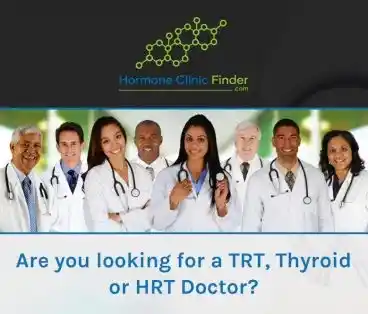madman
Super Moderator
* Among the human studies, 9 evaluated testosterone levels (total and/or free), 6 reported on gonadotropins (LH, FSH), and 5 assessed clinical hypogonadal symptoms such as libido and erectile function. In total, 7 human studies demonstrated a statistically significant increase in testosterone levels following GLP-1 agonist treatment, with stronger effects observed in men with obesity, T2DM, and baseline low testosterone. Two human studies showed no change or mild reductions in testosterone among eugonadal men without metabolic disease.
* GLP-1 receptor agonists may offer dual metabolic and endocrine benefits in men with functional hypogonadism secondary to obesity or T2DM. Evidence supports a modest but consistent increase in testosterone and improvement in clinical symptoms of hypogonadism, particularly in metabolically impaired populations. These effects appear to be mediated through both weight loss and potential direct action on the HPG axis. However, GLP-1 agonists do not appear to significantly alter androgen status in metabolically healthy, eugonadal men
GLP-1 Agonists and Testosterone Deficiency: A Systematic Review of Clinical and Preclinical Evidence
Mahmood, A1; Steinberg, B1; Chang, J1; Bourricaudy, RA1; Bhutani, S1; Varela, J1; Campbell, K2
1 - University of Florida College of Medicine
2 - University of Florida, Department of Urology
Introduction
Glucagon-like peptide-1 receptor agonists (GLP-1 RAs) have emerged as powerful tools for weight reduction and glycemic control in patients with obesity and type 2 diabetes mellitus (T2DM). These metabolic conditions are closely associated with functional hypogonadism, a prevalent and underdiagnosed contributor to male sexual dysfunction, infertility, and reduced quality of life. The interplay between metabolic disease and the hypothalamic-pituitary-gonadal (HPG) axis has garnered increasing attention, yet the specific impact of GLP-1 agonists on testosterone production and gonadal function remains incompletely understood.
Objective
To systematically review the existing literature on the effects of GLP-1 receptor agonists on male hypogonadism, including changes in total and free testosterone, luteinizing hormone (LH), follicle-stimulating hormone (FSH), sex hormone-binding globulin (SHBG), and clinical symptoms of androgen deficiency.
Methods
A systematic review was performed using the MEDLINE database to identify studies published between inception and March 2025. Search terms included combinations of “GLP-1 receptor agonist,” “Liraglutide,” “Semaglutide,” “Testosterone,” “Hypogonadism,” and related MeSH terms. Inclusion criteria were original studies (human or animal) reporting outcomes on reproductive hormone levels or hypogonadal symptoms. Exclusion criteria included studies without male-specific endocrine data, non-original research (e.g., editorials), or irrelevant endpoints. Two independent reviewers screened abstracts and full-texts using Covidence. Review articles and case reports were considered if they summarized relevant primary data.
Results
Of 101 studies identified, 97 were screened after duplicate removal. After abstract and full-text review, 23 studies met inclusion criteria. Of these, 11 involved human subjects and 12 used animal models. Among the human studies, 9 evaluated testosterone levels (total and/or free), 6 reported on gonadotropins (LH, FSH), and 5 assessed clinical hypogonadal symptoms such as libido and erectile function. In total, 7 human studies demonstrated a statistically significant increase in testosterone levels following GLP-1 agonist treatment, with stronger effects observed in men with obesity, T2DM, and baseline low testosterone. Two human studies showed no change or mild reductions in testosterone among eugonadal men without metabolic disease. Among the animal studies, 10 of 11 reported favorable effects on testicular morphology, hormone production, or HPG axis signaling. Across models, improvements were attributed both to weight-independent GLP-1R-mediated signaling and weight loss–associated metabolic normalization.
Conclusions
GLP-1 receptor agonists may offer dual metabolic and endocrine benefits in men with functional hypogonadism secondary to obesity or T2DM. Evidence supports a modest but consistent increase in testosterone and improvement in clinical symptoms of hypogonadism, particularly in metabolically impaired populations. These effects appear to be mediated through both weight loss and potential direct action on the HPG axis. However, GLP-1 agonists do not appear to significantly alter androgen status in metabolically healthy, eugonadal men. Further randomized trials are needed to establish therapeutic roles and clarify mechanisms of action.
* GLP-1 receptor agonists may offer dual metabolic and endocrine benefits in men with functional hypogonadism secondary to obesity or T2DM. Evidence supports a modest but consistent increase in testosterone and improvement in clinical symptoms of hypogonadism, particularly in metabolically impaired populations. These effects appear to be mediated through both weight loss and potential direct action on the HPG axis. However, GLP-1 agonists do not appear to significantly alter androgen status in metabolically healthy, eugonadal men
GLP-1 Agonists and Testosterone Deficiency: A Systematic Review of Clinical and Preclinical Evidence
Mahmood, A1; Steinberg, B1; Chang, J1; Bourricaudy, RA1; Bhutani, S1; Varela, J1; Campbell, K2
1 - University of Florida College of Medicine
2 - University of Florida, Department of Urology
Introduction
Glucagon-like peptide-1 receptor agonists (GLP-1 RAs) have emerged as powerful tools for weight reduction and glycemic control in patients with obesity and type 2 diabetes mellitus (T2DM). These metabolic conditions are closely associated with functional hypogonadism, a prevalent and underdiagnosed contributor to male sexual dysfunction, infertility, and reduced quality of life. The interplay between metabolic disease and the hypothalamic-pituitary-gonadal (HPG) axis has garnered increasing attention, yet the specific impact of GLP-1 agonists on testosterone production and gonadal function remains incompletely understood.
Objective
To systematically review the existing literature on the effects of GLP-1 receptor agonists on male hypogonadism, including changes in total and free testosterone, luteinizing hormone (LH), follicle-stimulating hormone (FSH), sex hormone-binding globulin (SHBG), and clinical symptoms of androgen deficiency.
Methods
A systematic review was performed using the MEDLINE database to identify studies published between inception and March 2025. Search terms included combinations of “GLP-1 receptor agonist,” “Liraglutide,” “Semaglutide,” “Testosterone,” “Hypogonadism,” and related MeSH terms. Inclusion criteria were original studies (human or animal) reporting outcomes on reproductive hormone levels or hypogonadal symptoms. Exclusion criteria included studies without male-specific endocrine data, non-original research (e.g., editorials), or irrelevant endpoints. Two independent reviewers screened abstracts and full-texts using Covidence. Review articles and case reports were considered if they summarized relevant primary data.
Results
Of 101 studies identified, 97 were screened after duplicate removal. After abstract and full-text review, 23 studies met inclusion criteria. Of these, 11 involved human subjects and 12 used animal models. Among the human studies, 9 evaluated testosterone levels (total and/or free), 6 reported on gonadotropins (LH, FSH), and 5 assessed clinical hypogonadal symptoms such as libido and erectile function. In total, 7 human studies demonstrated a statistically significant increase in testosterone levels following GLP-1 agonist treatment, with stronger effects observed in men with obesity, T2DM, and baseline low testosterone. Two human studies showed no change or mild reductions in testosterone among eugonadal men without metabolic disease. Among the animal studies, 10 of 11 reported favorable effects on testicular morphology, hormone production, or HPG axis signaling. Across models, improvements were attributed both to weight-independent GLP-1R-mediated signaling and weight loss–associated metabolic normalization.
Conclusions
GLP-1 receptor agonists may offer dual metabolic and endocrine benefits in men with functional hypogonadism secondary to obesity or T2DM. Evidence supports a modest but consistent increase in testosterone and improvement in clinical symptoms of hypogonadism, particularly in metabolically impaired populations. These effects appear to be mediated through both weight loss and potential direct action on the HPG axis. However, GLP-1 agonists do not appear to significantly alter androgen status in metabolically healthy, eugonadal men. Further randomized trials are needed to establish therapeutic roles and clarify mechanisms of action.












